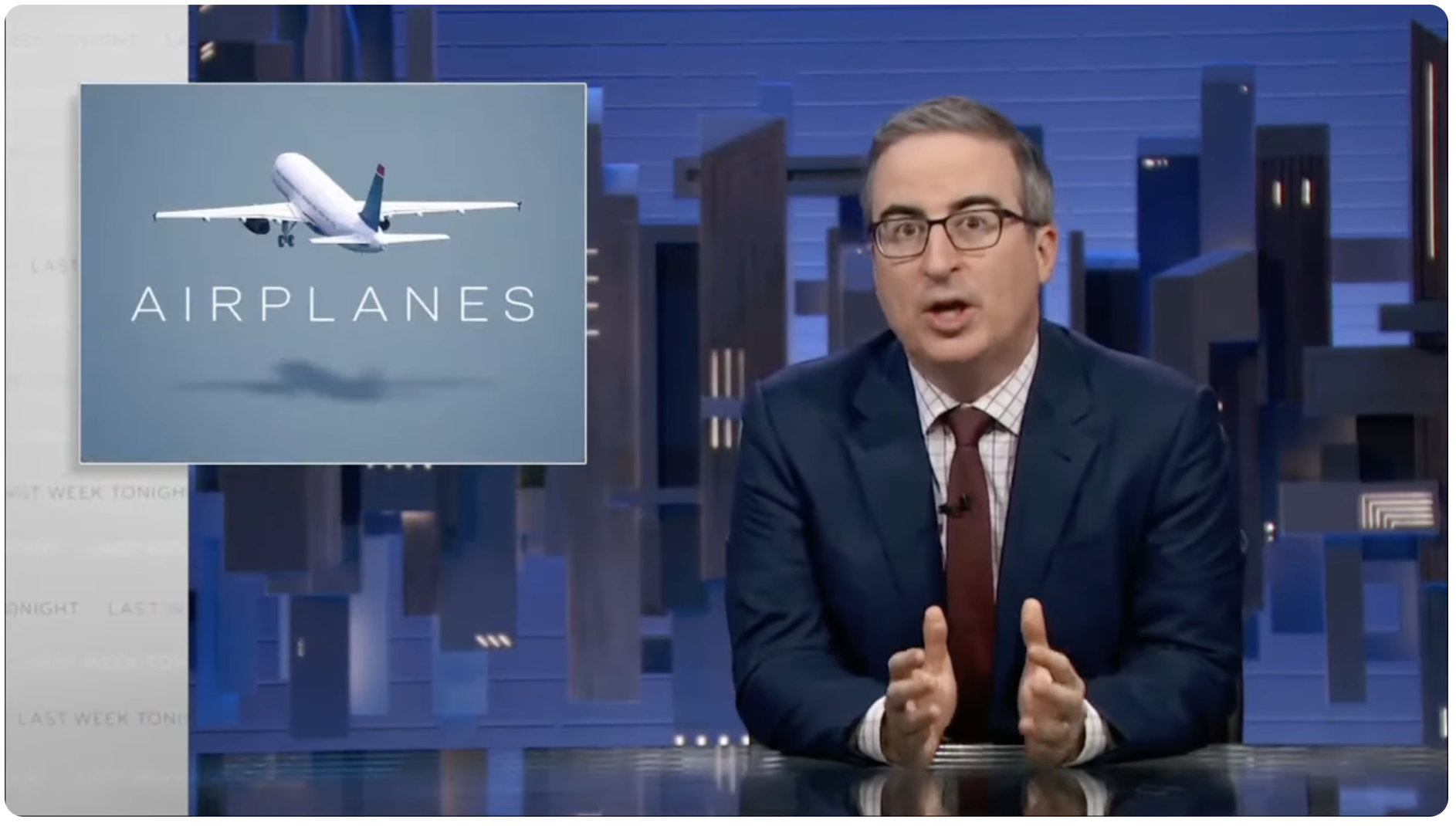
The first plane that the FAA sidelined for safety issues was the McDonnell Douglas DC 10. It was May 25, 1979, and an engine detached from American Airlines 191 as it departed Chicago’s O’Hare.
The DC 10 crashed, seconds into take-off. All 271 people on board died, as did two people on the ground.
On the most recent episode of Last Week Tonight, John Oliver followed up with this: the second plane that the FAA sidelined was manufactured by Boeing while under former McDonnell Douglas leadership. It was 2013. The plane? The Boeing 787 Dreamliner.
In 2019, The Air Current explored the parallels between DC 10 safety issues and the two fatal Boeing 737 MAX crashes that led to its grounding. It was the third plane that the FAA has sidelined for safety reasons; McDonnell Douglas leadership was in charge for all three.
- In a 1974 crash in Paris, which killed 346 people, the DC 10 lost its rear cargo door.
- In January 2024, a Boeing 737 MAX lost a door plug in the passenger cabin. The Alaska Airlines flight was departing Portland, OR.
Boeing had delivered that 737 MAX to Alaska Airlines only two months prior. “That’s too soon for a sneaker to fall apart, let alone a multimillion-dollar aircraft,” Oliver said. Subsequent investigation revealed that the Boeing staff in Renton, WA had failed to see that the 737 MAX door plug was missing its four retaining bolts.
A profit-driven culture took over; within a few years, the company introduced a stock buyback program, as priorities shifted from safety and product to stock prices. Oliver outlined how this process affected the development of the 787 Dreamliner in the 2000s, which was given less than half the budget of previous planes, and outsourced production to 50 different suppliers. “So basically, the plan was for Boeing to create the plane the same way someone ‘creates’ a gingerbread house from a kit,” said Oliver, “essentially assembling a bunch of pieces other people made, leading to a finished product that, structurally speaking, was always going to be a f***ing mess” …
“At every point along the way, the FAA either delegated responsibility to Boeing, or gave them the benefit of the doubt, which hopefully they will never do again,” Oliver summarized. “Because Boeing, like so many American companies, seems to be coasting on a reputation it built up over decades even though it squanders it quarter by quarter” (emphasis added).
One point that the mainstream media seem to have missed, but Oliver’s team did not, is that there is a serious problem with Boeing’s de-icing system.
One [pilot] we spoke to even sent us a photo of this post-it note he uses in his cockpit to remind him to turn off the anti-icing system, along with an iPhone timer. And that’s too much pressure for a f***ing post-it note. They shouldn’t be the last line of defense against plane crashes.
In January, I detailed “how a once-great engineering company created deadly planes” in the wake of the door-plug incident. Oliver provides a much more entertaining history. We both center the pivot point as post Boeing-McDonnell Douglas merger, when the MD folks assumed company reins.
Irony alert: one of the first things the former McDonnell Douglas leadership did when it rose to the top of the Boeing hierarchy was to spin off Boeing’s 1940s-era Wichita facility that manufactured fuselage. According to various news reports, Boeing management has decided it should resume ownership of the Wichita facility, now known as Spirit AeroSystems.
The current Boeing chief, Dave Calhoun, is a not a career aviation engineer. (He has a bachelor’s degree in accounting from Virginia Tech, my graduate school alma mater.) Nor does he have Boeing experience; he is a veteran of the General Electric Company, which is notable these days for weaponry.
In January, I wrote:
The Boeing board should have fired ALL C-suite executives by the end of 2020. Instead, the Board made The Blackstone Group/Nielsen Holdings/General Electric alum David L. Calhoun the CEO. (Not an engineer: all finance, all the time.) Calhoun had sat on the board while McDonnell Douglas alumni, financiers not engineers, made decisions that led directly to those 346 deaths.
This weekend, Oliver also called for Boeing to clean house.
It’s pretty clear, something has to change at Boeing. And it has to be at the top of that company. Because if you’re truly too big to fail, that should mean you’re big enough to spend the time and resources required to fix the culture you’ve destroyed.
Watch the episode. Then call your U.S. Senators and Representatives. We need an empowered (and funded) FAA. We also need anti-trust enforcement: there are only two major airplane manufacturers in the world. Monopolies require dedicated and intelligent oversight for the public interest.
.
Note: Transcript.
.
Also
- Jan. 9, 2024. A Boeing 737 MAX 9 blew an escape hatch on Friday. Here’s how a once-great engineering company created deadly planes.
- Jan. 10, 2024. Alaska and United are the only US airlines with a Boeing 737 MAX 9 in their fleet; all have the door plug
- Jan. 14, 2024. Should the Boeing deferred prosecution for 737 MAX 8 fatal crashes be rescinded?
.
.
Talk to me: BlueSky | Facebook | Mastodon | Twitter
Known for gnawing at complex questions like a terrier with a bone. Digital evangelist, writer, teacher. Transplanted Southerner; teach newbies to ride motorcycles. @kegill (Twitter and Mastodon.social); wiredpen.com
















